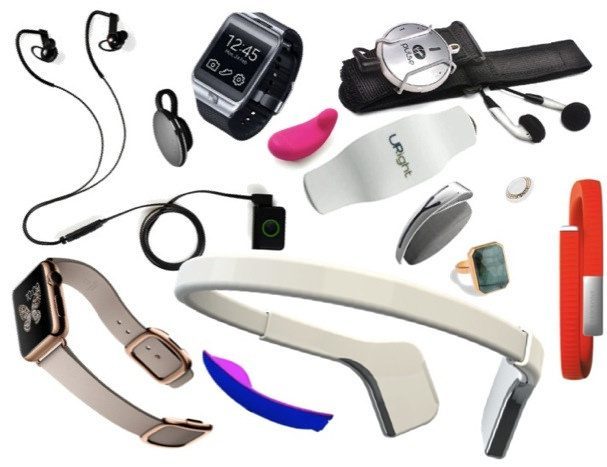
Editor’s Note: Tasso Roumeliotis is the CEO and Founder of Location Labs by AVG, a global pioneer in mobile security for humans and is an expert in mobility. Prior to Location Labs, Tasso was a Vice President at Claridge, a $3 billion fund with wireless and media assets.

In the past 5 years, I’ve tried more than 2 dozen wearable devices. Some for less than a week, some only once, but very few have become part of my lifestyle.
Now, I’m not necessarily your average user. You could say I’m really into optimizing health. Truth is, I’m a quantified-self junkie. Sure, I’d like to live forever, but really, I love the game. What’s the best combination of sleep, food, exercise? What variables can I tweak? Can I see really cool graphs?
Device-makers have yet to create gadgets with ongoing value, however. While knowing how many steps I take a day or how much REM sleep I usually get is interesting, these devices on their own are little more than monitors. I use them to diagnose, but once I know my patterns and what habits to tweak for better health, they’re no longer engaging.
Here’s how wearable devices across the board have delivered (or not) for me:
Activity tracking
Nearly every wearable nails this—which they should, since it’s what they do. Best by far is Fitbit. I’m on my fourth one and use it to count steps, including percentage of high-impact steps. Maybe ironic, but turns out I don’t sit enough. Fitbit recorded me at 40,000 steps a day (in my treadmill desk era)—basically, a marathon. Now I have a chair, but knowing when you’re too active or not active enough is invaluable.
The experience ends there, though. Fitbit needs gamification, variation, something that suggests, urges, or inspires movement, maybe at different intervals, different times of day. Instead of simply telling me what I do, I want it to tell me what I should do, and why.
Meaningful data
The Zeo (no longer being manufactured, but you can still find them on eBay) was incredible. I used it to see what percentage of my sleep was light, deep, REM, and how much I was really getting. When I varied my routine, like eating almond butter before bed, I could immediately see results. (For the record, almond butter = 25% more REM.)
I’ve also recently begun using the Withings scale to track my weight—more specifically, how my weight trends. And while I could make my own Excel graph, Withings does it better. Because day-to-day changes don’t matter. Trending down or up over 3 weeks is more important than 24-hour fluctuations. I also love that Dennis Crowley tweets his daily weight from Withings. And that I don’t have to.
Accuracy
To be fair, every wearable has at least one accuracy issue, and I’ve found discrepancies in basic measurements across devices. Take the Withings scale—the body fat calculator is way off. While this is a tough metric to nail, if wearables manufacturers are looking for long-term adoption, accuracy is vital. Why bother with something that gives you false data?
Design
Why are so many of these watches? I love watches. My dad won a big poker hand when he was 19 and bought an Omega Seamaster. Now it’s mine, an heirloom I’ll one day give to my son. I’m not going to give up wearing this memento to sport Basis Peak.
And I’m certainly not going to buy Apple Watch. It’s gaudy, for one. More important, I’m not going to sacrifice the real estate on my wrist for it. Watches might be neat, but they’re not meaningful. Like rings, they usually represent deep emotion, attachment. I seriously doubt anyone’s going to get their wedding date engraved on the back of an Apple Watch.
Also, as cool as the Zeo is, they’re now out of business, and I chalk some of that up to design. The clunky headband gave my kids one more reason to call me a dork. Which—believe me—they did not need.
Context
If the promise of wearables is that they’ll inspire behavior changes, they need to deliver more than just information about the user. For a while, I was using the Withings blood pressure monitor. While it measured just fine, I’d love stats from other people my age, weight, and activity level. Knowing how I compare can help me understand if what I’m doing is normal, if a change is needed, if variations are within range for the demographic I’m aging or changing into.
I was also left wanting more after using the Muse headband, though it’s the one wearable I continue to put on enthusiastically, months in. I started using it to calm down (given what a fanatic I can be, clearly I need to), and while it’s terrific at getting me into a meditative state, I’m hoping the next version incorporates various monitoring points for a more holistic view of meditation’s effects on heart rate, blood pressure, stress, over time.
Wow factor
Even after working in tech for 15 years, I continue to be amazed at how much can be packed into each tiny wearable gadget. I used the Basis Peak to monitor a variety of things: skin temperature, perspiration, and even heart rate. But the real fun for me is to experiment with the effects of my activities on my vital signs. Like measuring skin temperature during my morning ice bath (yes, that’s how I start the day). Watching it gradually drop to the 70s is frankly just cool. It never gets old.
Overall, though, while neat features make wearables fun, a device that keeps me engaged for the long haul needs to deliver more than novelty. The Fitbits of the world need to be more than cooler pedometers. And while a digital scale is convenient, it’s essentially a souped-up replacement for something I already had.
What’s missing from all these devices is integration. There needs to be an initiative for everyone to open up APIs, so I can see, for instance, how my sleep and meditation affect my weight and blood pressure. Or vice versa. Otherwise all these products are just going to be maximized in value by a bunch of body hackers like me, who dump data into spreadsheets and figure it out themselves. This is not a real solution for real consumers, and that’s where wearables need to go to really change our lifestyles, rather than just tell us how we’re already living.
Featured image credit: forbesoste via cc
